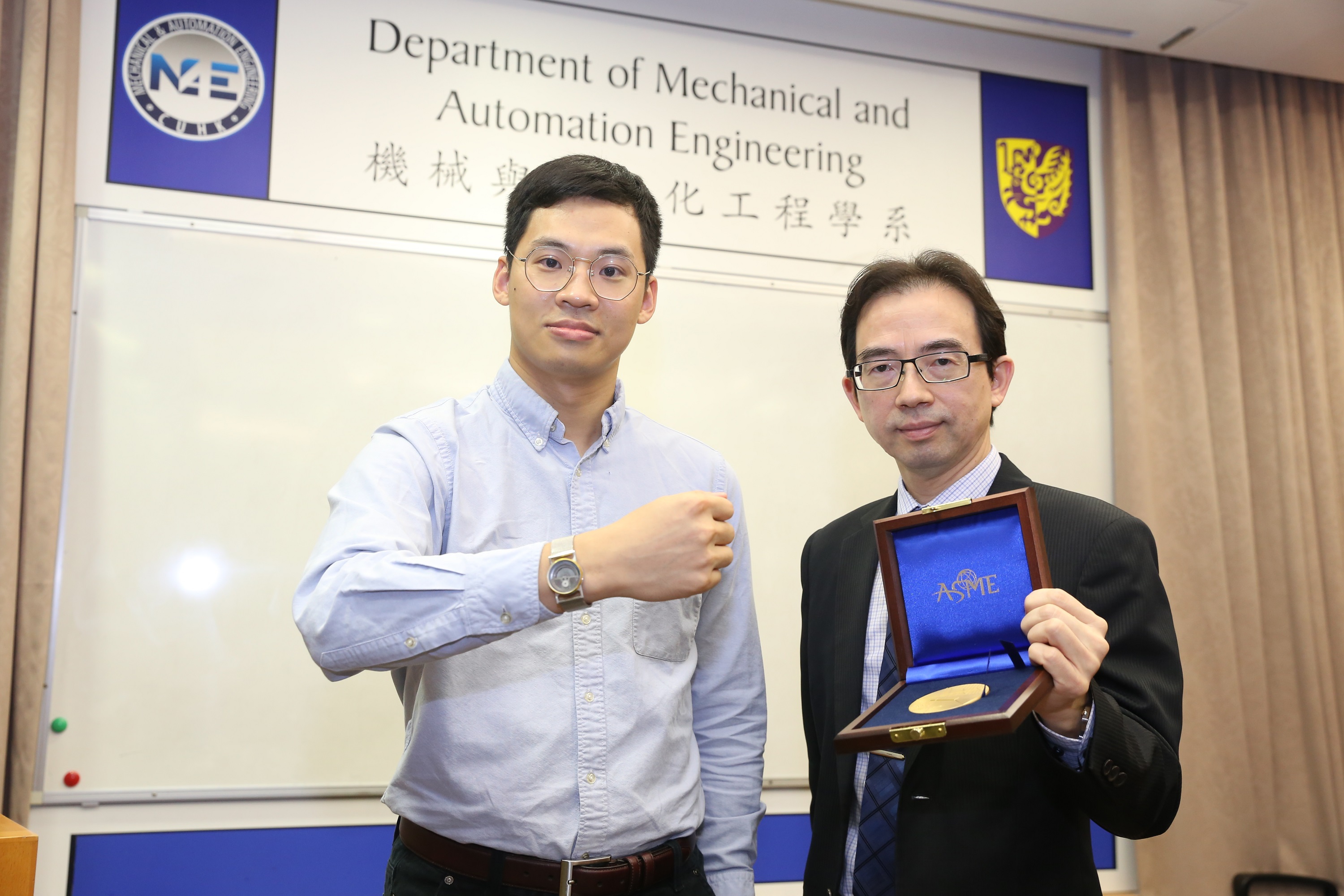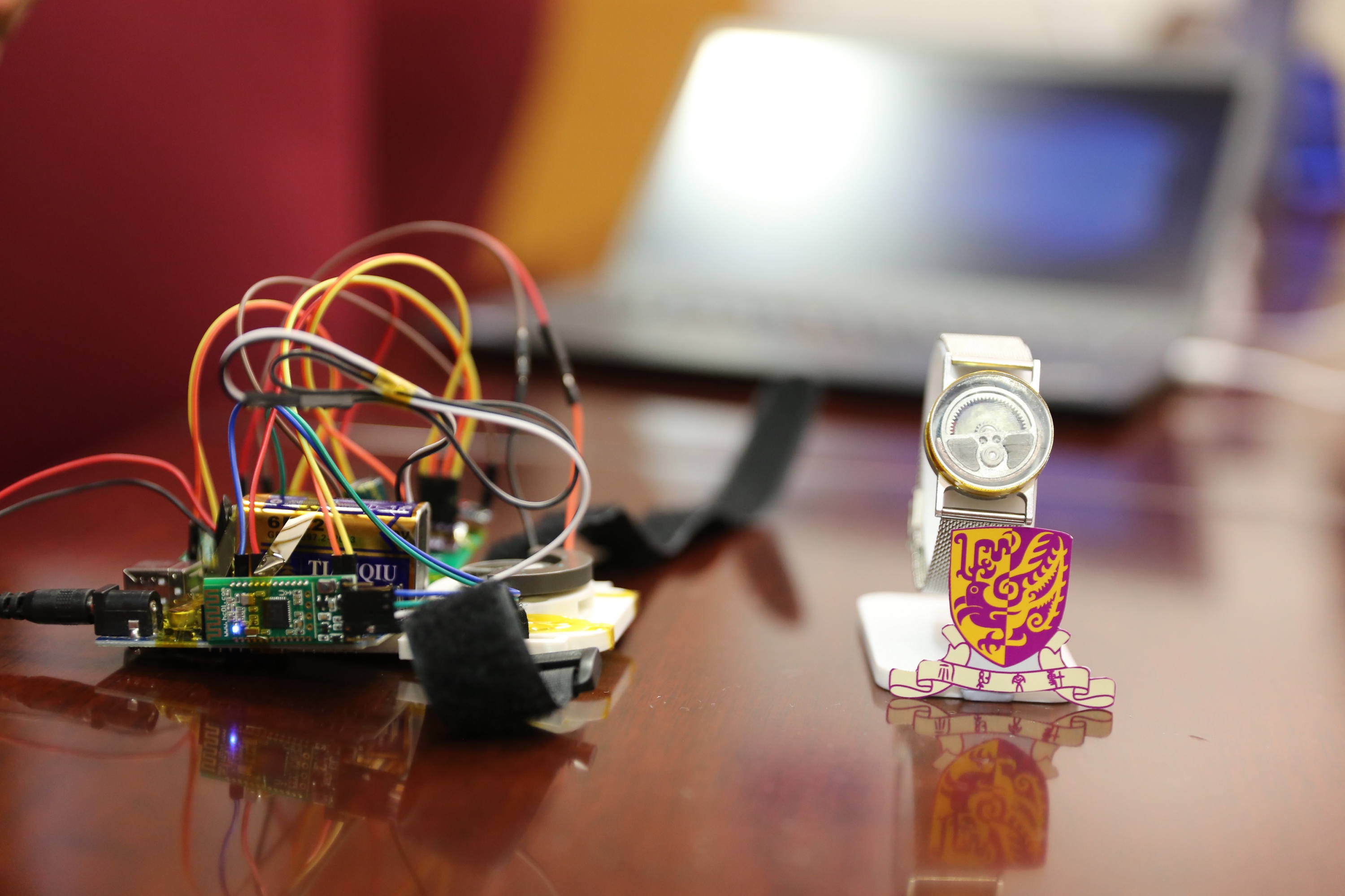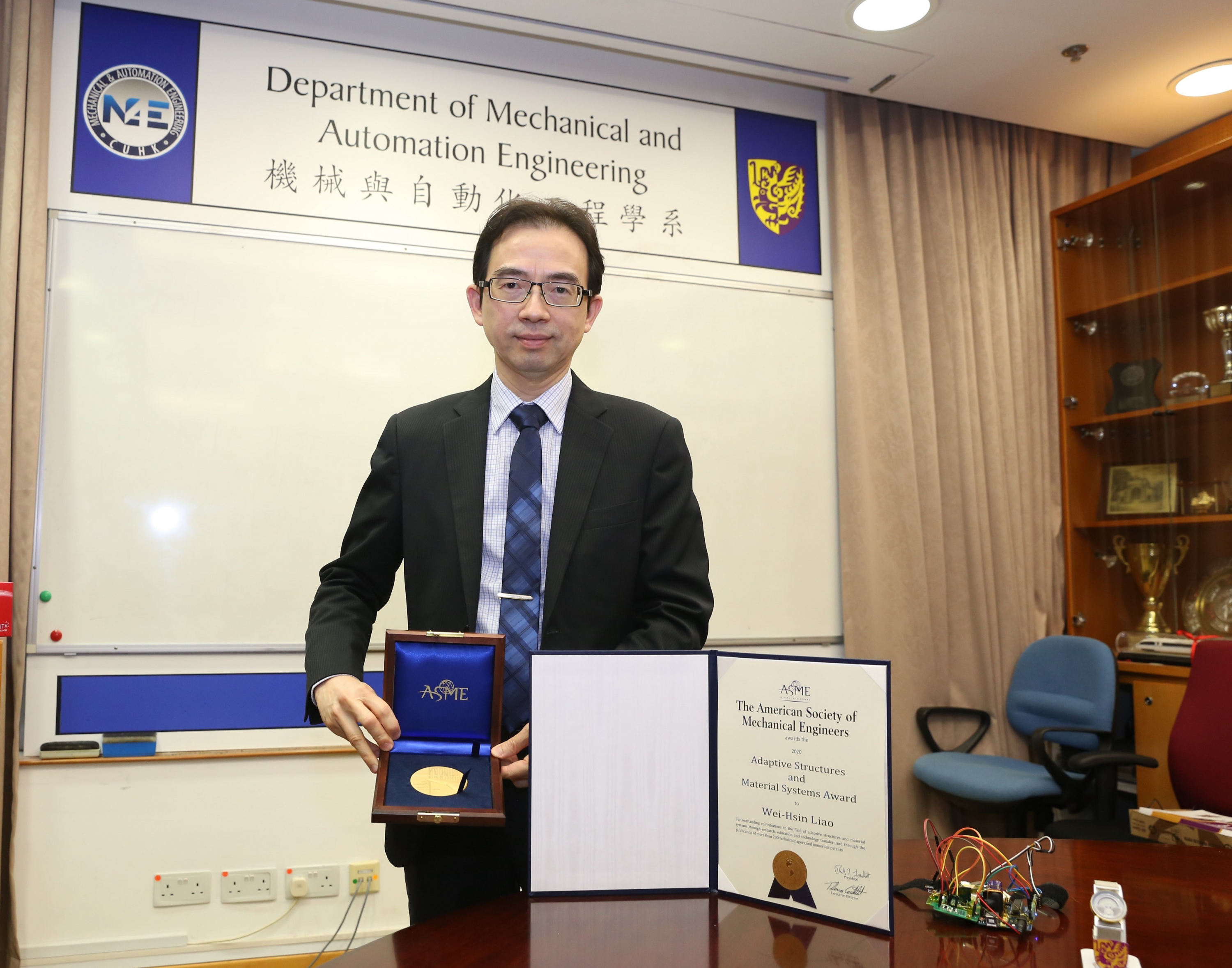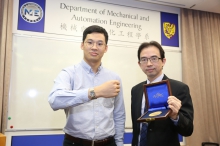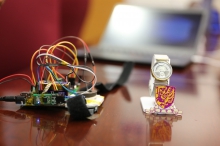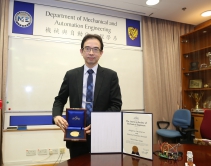CUHK
News Centre
CUHK Faculty of Engineering Develops Effective Energy Harvester Breaking through the Limitation of Battery Life of Smart Watches and Wristbands Earning International Recognition
Smart watches and wristbands are becoming more and more popular. Various new functions such as health monitoring, contactless payment, entertainment, living assistance, have been added to these small devices and bring convenience to our daily lives. However, the limited battery life of these devices, due to its critical size, remains a key issue.
To address this issue, a research team led by Prof. Wei-Hsin LIAO, Chairman of the Department of Mechanical and Automation Engineering (MAE) at The Chinese University of Hong Kong (CUHK), has developed an embedded energy harvester which is very efficient in generating electricity to sustainably power the smart watches and wristbands.
Energy harvesters have been used to power up traditional watches in which mechanical gears are equipped to increase the frequency of human motion and convert mechanical energy to electricity. But these designs have the disadvantage of incompact structure and require precision manufacture. The mechanical friction caused by the gears also leads to significant energy loss and such devices occasionally suffer mechanical failure.
Prof. LIAO and his research group on smart materials and energy harvesting tried to replace mechanical gears with electromagnetic components to solve the key issue. Dr. Mingjing CAI, one of the research group members, said, “The low frequency of human motion results in relatively low energy conversion efficiency. We applied a magnetic frequency-up converter to increase the frequency of human motion, which helps the energy harvester to efficiently convert the human motion into electrical energy. With the magnetic frequency-up converter, the output power of the device can be significantly enhanced, achieving ten times that of the published devices.”
The research team has proposed a highly compact embedded generator, equipped with a motion capture unit, a magnetic frequency-up converter and a power generation unit, together with coaxial topology. Thanks to the magnetic frequency-up converter, the energy harvester is highly compact and has a very high normalised power density. Although the total volume of the harvester is 5cm3, it can still achieve 1.74mW power output. The power density is ten times that of the existing devices. Benefiting from high power output and power density, the energy harvesting system can be easily embedded in the smart watches and wristbands to provide sustainable power supply. Different from mechanical gears, the magnetic frequency-up converter uses magnetic force for transmission, avoiding the energy loss caused by mechanical friction. Also, magnetic transmission can protect the device from impact. Furthermore, the magnetic frequency-up converter has the advantages of simple structure and low cost, which will help to commercialise the device in the future.
Specialising in smart materials and energy harvesting, innovation achievements bring Prof LIAO an international award
Professor LIAO is an international expert in the area of mechanical engineering. Since 1997, he has been with the CUHK where he is currently the Chairman of the Department of Mechanical and Automation Engineering, and the Director of the Institute of Intelligent Design and Manufacturing. Striving for the innovative spirit, his research has led to publications of over 280 papers in international journals and conference proceedings. He has also held numerous granted patents and recognitions.
Recently, he was selected to receive the Adaptive Structures and Material Systems Award by the American Society of Mechanical Engineers (ASME). The Adaptive Structures and Material Systems Award recognises significant contributions to the sciences and technologies associated with adaptive structures and material systems. Professor LIAO is the first Hong Kong recipient of this award.
Professor LIAO said, “I am truly honoured to have received this award from ASME. This is a recognition of my research team and I am grateful to my colleagues who have been there to support me over the years. As a scholar, not only do I hope that I can invent new solutions with engineering research, but I can also offer insights and inspirations to the next generation of youngsters, making them a force for technological advancement.”
The team has produced a miniature energy harvester while maintaining sufficient electricity output to power smart watches.


